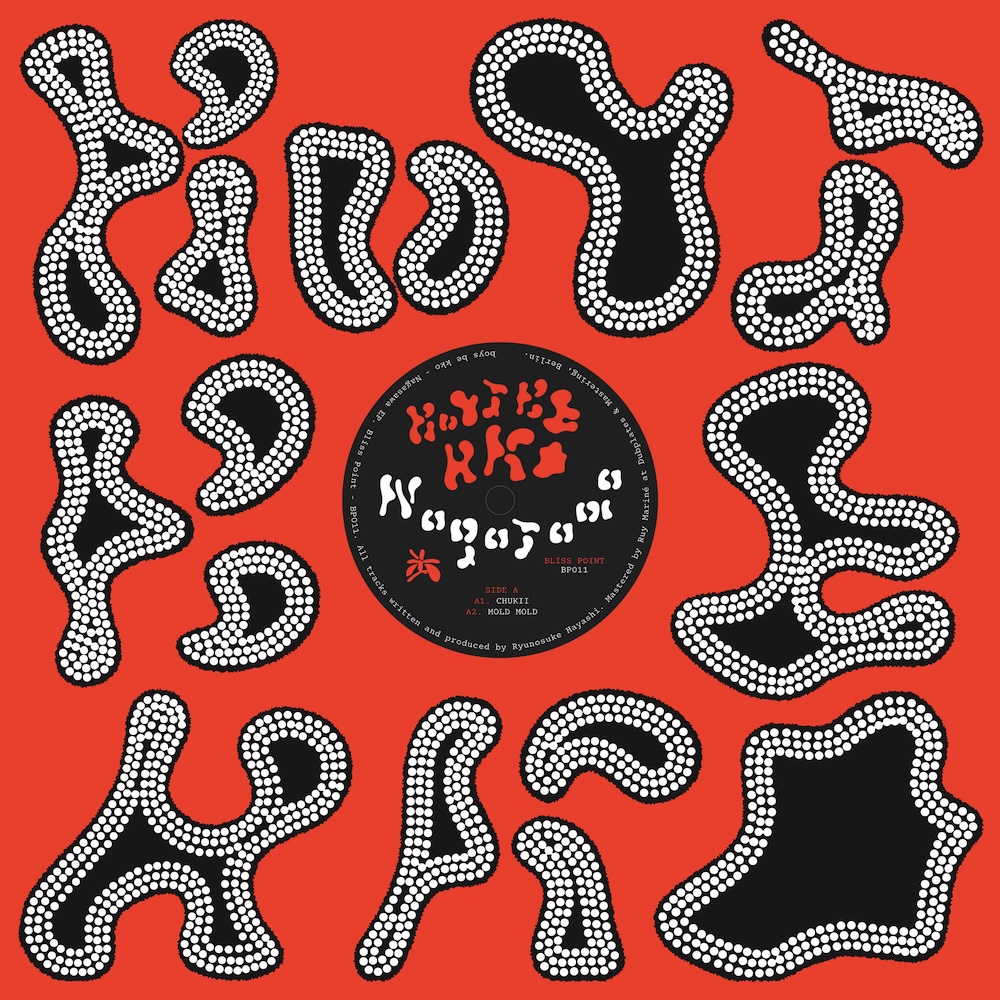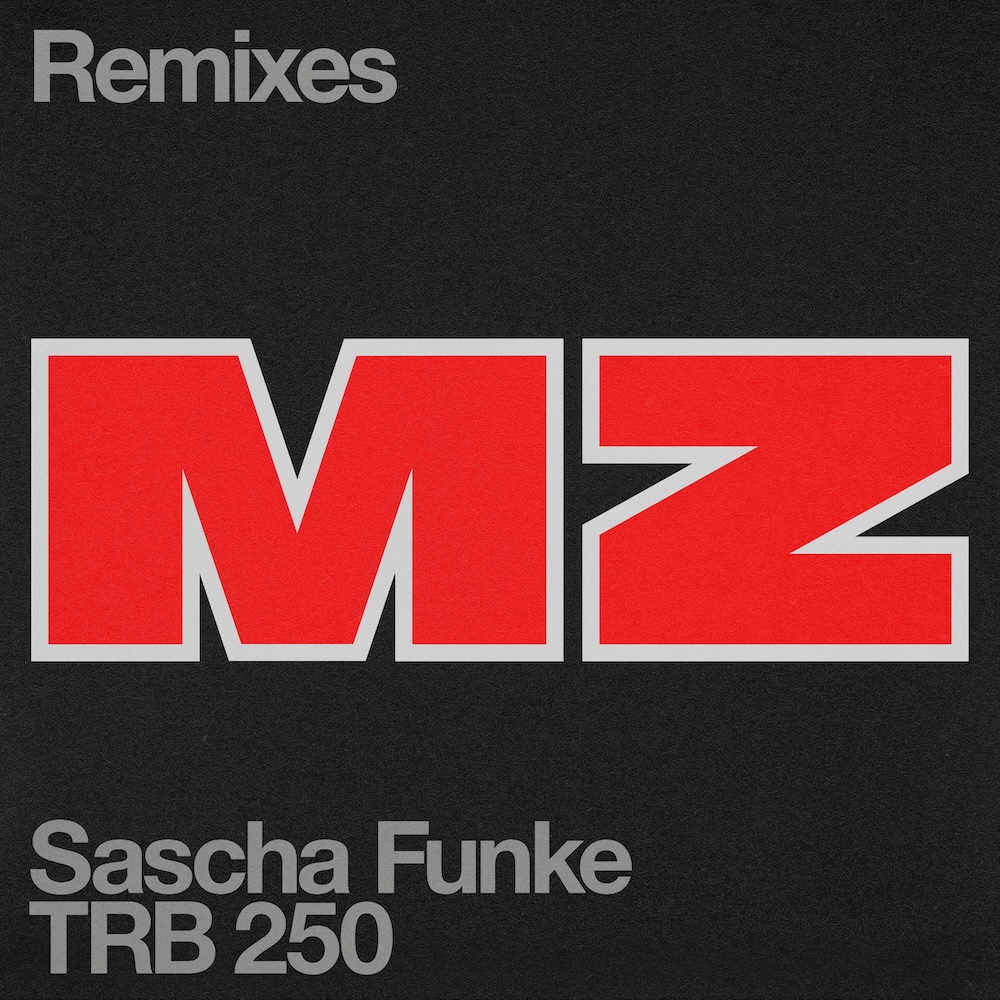Track By Track: Stefan Goldmann – Industry

Hollow Sound
R$N kindly asked me to structure this text around a framework of inspiration, colours, seasons and settings. Now there's a problem: what had inspired me? I wasn't inspired. Colours? There's hardly a colour scheme that relates to the lists of presets through which I was scrolling – other then the RAL or Pantone colour norm palettes. I vaguely recall the season, but it must have been warm outside since it took me five days to produce "Industry." I just had to spend hours in the park and at my favourite café terraces because most of the time you can't do this in Berlin since it's either too cold or raining. Had I begun producing this in the winter, I probably would have worked more than two hours a day. But the settings I can recall – actually all of them:
I've printed the list of presets I used on the back of the LP cover and the album will also be released as a floppy disk version containing the original MIDI files. I guess that's as comprehensive as it gets. Because this is all "Industry" is about: take three cheap Japanese workstation synth and just let their preset sounds work their "magic." Please don't think that I'm trying to brag about this. I can't really take much credit here. A lot of what makes the final result so pure in its absence of effort wasn't even planned – it just happened accidentally. For instance midway through recording the album I recognized I had forgotten – or rather not thought about – assigning stereo panning positions to the individual sounds. Weirdly they had positioned themselves, more vertically than than in a horizontal panorama: the preset sounds of an instrument like the Korg Triton are designed to work together without further adjustments. Usually I spend a lot of time balancing the specific stereo image of a track, but here… it just wasn't necessary. Was I lazy? You bet! I had to be, in the name of art. But then again, if Sam Philipps could produce Elvis back at Sun Studios while he didn't even have a pan pot on his console, why bother? I don't think that anybody has ever complained about the Sun Sessions.

Looted
When you look at engineering boards, people obsess about the best gear for this and the best gear for that. Like, one EQ is only good for kicks and another one is only good for hihats. By contrast, the people running studios like those at the Stax or Motown labels back in the day were lucky if they had ANY gear to do the job. There wasn't one high end compressor per channel. They just had to come up with techniques to make stuff sound good with just two microphones and one compressor because that's all they had. The drummers adapted their playing to the situation and actually something pretty good came out of that. This is the reason why people would sample breaks from exactly these recordings: you just can't get that enveloping sense of holistic punch out of drums miked individually or programmed one by one in a grid sequencer. I also like to think that techno has such an impact as a concept since in its early days its production had to be conceived with just two or three very simple pieces of gear. The more paraphernalia, the fuzzier the results.
The simplification that generated "Looted" turned out to hint in a similar direction because most of the sounds happen to be in one stereo channel (and stuff in that channel being mostly in the centre) going through one compressor – which just splatters everything indiscriminately. The snare would push down the chords, and the bass would push down the hihat… Now, I happened to have a pretty awesome instance of a compressor for this and to my surprise the cleaner and less interesting the input was on its own, the more the compressor worked its magic. On great drum samples this thing just sounds nice, but on awfully clean preset drums it sounds larger than life. Nobody mixes all instruments into one compressor that pushes everything down to zero. Now of course this doesn't sound like Motown AT ALL, but the parallel is that I too found another instance of "less is more." And I could drop all the slick funk clichés I ever wanted to drop but never dared to.

The Bribe 2011
When I was seventeen, my best friend was a big fan of a fusion guitarist named Allan Holdsworth. I always thought the sounds in his recordings were really plasticky, but the chords he was pulling off were going through the most unlikely progressions. It felt very alien. Still, I never got around to really like it. Around the same time I was into Photek big time and I had this record of his remix for Goldie's "Still Life." To my surprise it started off with totally Holdsworth-ian chords and I ended up liking them a lot more than the "original": they seemed to have found the right context. For "The Bribe" I shaped this long intro of strange chords with a nod to Photek-trying-to-be-Holdsworth. But then again I used a tuning preset for Arabian music and that makes it sound even stranger, especially with those cheesy pad sounds.
Lunar Caustic
Once I had found some pleasure in building odd chord progressions, I couldn't resist having these in another track too. Now, all the tracks on "Industry" aren't exactly new creations, or creations at all. On a note level they all build on plundered bits and pieces of older tracks of mine and the titles hint at these. If you take an odd melody like the one of "Lunatic Fringe" and want to have some chords to go along with it, these chords seem to design themselves and fall into place almost automatically. It's not really much of a conscious process. I've always liked the awkwardness of fusion guys or prog rockers trying to come across as sophisticated composers through crafting complicated, showingly out-there harmonisations. The electric piano tinkling and electric bass ornaments here in "Lunar Caustic" are a nod to that context – just without the virtuosity and the musicianship (whatever that is supposed to be).

Tanotamun Drift
This was the quickest tune on the album. Programming took probably less time then the duration of the actual track. Some people who maintain a negative attitude towards techno suspect this to apply to most of the tracks out there. "Oh, you just push buttons" or "You make a loop and then you copy and paste it to ten minutes duration." I've really heard people say that! If this were actually true critics should fall onto their knees in awe. That's like owning the secret power of expanding time. Magic! Let's waste no more words on it.
Izod
I'm particularly fond of the tunes that just throw three presets together, yet sound totally "experimental." That's such a great contradicton. And this is one of them.
Aurelola
Drums! I don't know how those toms are called that just bump into the drum bus left and right. These are on display here together with some other 1980s pseudo-signature sounds. Again, most of these have been crammed into one stereo channel. The main reason for this was that I didn't allow myself much time to learn the peculiarities of the workstation synths I used (such as assigning stuff to multiple stereo outputs). I had selected three particular models for their low price on Ebay and I wanted to get results as quickly as possible. Now, if you want to buy something popular like a Prophet 5 synth it's a lot of money. But if you end up placing the winning bid at just 150 Euros for a synth that can put out 128 voices simultaneously, you know nobody wants that stuff – despite all its power. It's a box full of orphan presets waiting to be loved. In 1991 somebody in Hamamatsu decided these sounds should be the hot stuff next year, but when next year arrived nobody showed up to pick them up. Obviously, this didn't change ever since. Classical cultural critique used to assume that there is an industry that sets the trends and people are somehow manipulated into going along with these designs. Orphan presets, failed sounds, units that get no love – these are the falsification facilities for such assumptions. Employing these "failures", I could explore a marginalised industrial world of audio design – guilt-free.
Radiation
Nuclear radiation has no colour. And it also has no odor or sound. You only know about it when you look at a meter or when they tell you you've got cancer. If we agree that it is a good idea to believe that something like radiation exists despite the fact that you can't sense it, this also means there's always a possibility that there's more than meets the eye – with anything! Psychologist Daniel Kahneman once described a bias of perception which he named "What you see is all there is" (WYSIATI) when jumping to conclusions on the base of incomplete information. For instance: is the track named "Radiation" just kitsch with a bad imitation of a guitar (because that's all we'll probably identify at a first encounter)? Or is there more? How could we ever know?
Hendecagon
I have a track that's called "Double Hendecagon" and it's just a beat – no chords, bass lines or anything else really. The thing is it's a very reduced, very straight forward beat, but at the same time it's pretty odd. I mean, it's literally odd because it's an 11/8 "odd metre" beat. Incidentally, I assigned this rhythmic pattern to a synth preset and it produced some chords. Let's call it the trance accident. In the context of this project I grew really superstitious – signs taken for wonders. If some sound came along that sounded like exemplifying bad taste or just wrong or weird, I almost grew afraid of changing it to something else. That would have made it some sort of sound design and this I definitely couldn't use here. So in this case I just went along with it and put a beat underneath.
There is also a theory called the "Ikea Effect" which is important here: think of how Ikea make you assemble their stuff. It's so easy that anybody could do it, but still you have to read a manual, identify the correct parts and spend time on turning in the screws. The theory then says that if you put effort into something, you end up valuing the result more then if you get a complete one from the shop for the same money. Remember it's the same shitty shelf and you have no influence whatsoever on how it will look in the end. But because it's "your" shelf, you just like it a bit more than you would if I had assembled it for you. I thought this also applies to people playing around with modular synths: apparently thousands of modules are sold, but where's all the great music done with these? Now, a modular synth doesn't produce any sound before you haven't connected all the cables that link every tiny element of sound design to the next. If effort makes you like stuff more than it's actually worth, imagine how huge the gap is between what people think they have produced in a modular world and what you hear in it when you just get the track! I figured out this can never happen to somebody who uses presets: because you don't do anything you can hear it afresh – just like the real audience. You're not biased by a wrong sense of ownership.
Why "wrong"? A lot of people claim too many records sound the same. And I agree, but I'd be a bad person if I'd draw the conclusion that the people who produce these records just want to jump on a bandwagon, exploit a market that already exists and which demands a certain sound. I think it's more likely that everybody who produces music and actually puts down money to have it released on a record has some love for their music too. I mean, I've heard that the average tech house vinyl release out there sells below 300 copies. That's hardly commercialism, is it? I think people just enjoy the process of getting that track together. They sit in front of their speakers and listen to a loop for hours just for the fun of it. They grow to love all the details, that little smack of the compressor, that bulge the EQ puts in the high end, that slightly rough edge in the bass… Now contrast this with Avicii for instance: there's a video that shows him just scrolling through a list of presets. He isn't biased at all. He knows exactly how the thing will sound when you hear it for the first time.
Point Catwash
In Japan you see animals symbolizing the hell out of stuff just about everywhere. In the subways you see a raccoon that has hurt its paw because it jumped through the closing doors, a panda shows you the way to the toilet and on the bus there are special seats reserved for the elderly, the pregnant, those with toddlers and … bears. The bear is probably just a symbol for something, but it's there. Cats wave their arms to lure money into the shops. An entire symbolic zoo is employed in public communication. Sometimes sounds have that zoomorphic quality too: for instance Rashad Becker's music seems to be inhabited by fat mosquitos that complain about stuff. During one of my excursions through vast banks of presets, I found this one sound that immediately made me decide "oh, that's a cat." And here it is.
Trench Kit
Another "experimental" track. In synthesis, there is a setting called monophonic in which only one tone at a time can be produced even when you press several controller keys simultaneously. I found out that I could sit on my keyboard and wiggle my butt and this would produce pretty IDM-ish lines. This could be considered a neo-surrealist addition to the classical set of techniques that reveal the preconscious, such as frottage, automatic writing or "exquisite corpse." Also a keyboard usually has 88 keys or more, but many sounds are only conceived to work within two or three octaves. If you just go very low and very high on the keys you get something quite different. It's still that preset but it just sounds totally off-centre, like Casio sounds on helium or like a tape machine with a dying power supply (especially when you add some pitch bend wheel moves – an old specialty of mine). I also found most 1980s and 1990s workstation synths to carry presets that resemble some sort of field recording. It's interesting how you can mimic all these supposedly hyper-individual sounds such as recordings of an environment or characteristics such as "free expression" or "complex synthesis" with the most simple, industrially predigested means.
'Industry' is out via Macro Records from October 20th.


















Must Reads
David Holmes – Humanity As An Act Of Resistance in three chapters
As a nation, the Irish have always had a profound relationship with the people of Palestine
Rotterdam – A City which Bounces Back
The Dutch city is in a state of constant revival
Going Remote.
Home swapping as a lifestyle choice
Trending track
Vels d’Èter
Glass Isle
Shop NowDreaming
Timothy Clerkin
Shop Now